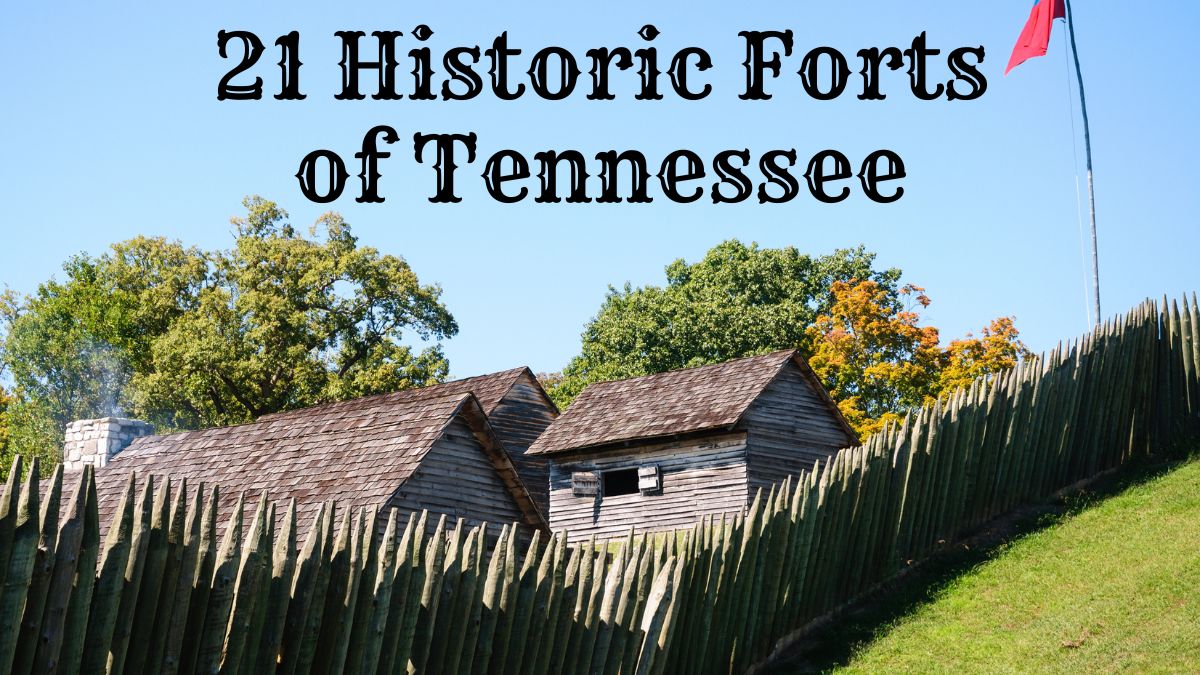The great state of Tennessee has seen its share of historic forts. From the early settlers in the area to the Civil War, forts protected troops, settlers, and supply chains from attacks by Indians and their enemies.
In this article, historic forts of Tennessee, we will explore 21 of these forts. You will learn when these forts were built and for what purpose.
21 Historic Forts of Tennessee
| 1. Fort Adair | 12. Fort Prudhomme |
| 2. Fort Assumption | 13. Fort Randolph |
| 3. Bledsoe’s Station | 14. Fort Sanders |
| 4. Fort Blount | 15. Fort Wright |
| 5. Camp Boone | 16. Fort Nashborough |
| 6. Fort Cass | 17. White’s Fort |
| 7. Fort Defiance | 18. Fort Southwest Point |
| 8. Fort Donelson | 19. Fort Watauga |
| 9. Fort Henry | 20. Tellico Blockhouse |
| 10. Fort Negley | 21. Fort Loudoun |
| 11. Fort Pillow |
1. Fort Adair
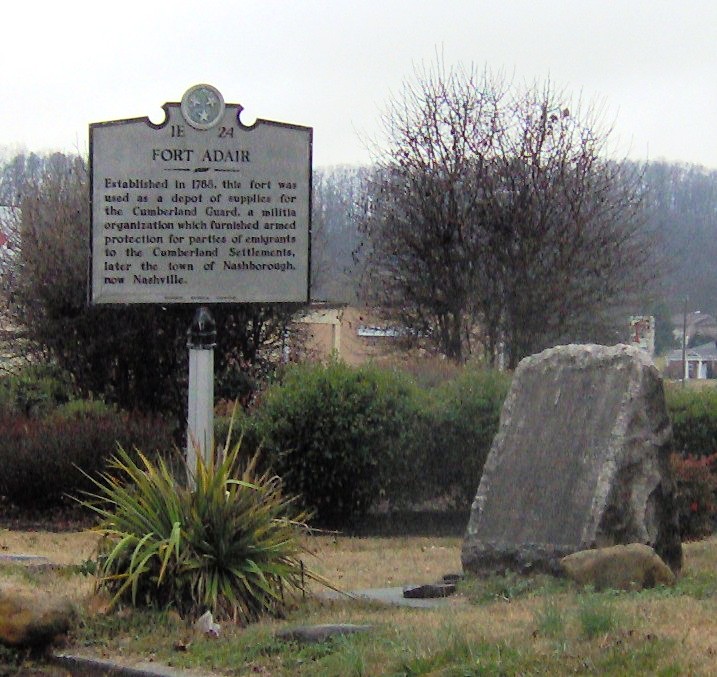
Captain John Adair built Fort Adair between 1788 and 1791 as a stockade fortification.
Fort Adair was used as a supply depot for those European Settlers who wanted to settle in the Appalachian Ridge and Valley Region of East Tennessee.
It also was used as a supply station by settlers migrating west. And it offered protection from the Cherokee Indians during the Cherokee-American Wars.
The exact site of Fort Adair is unknown, but it’s speculated that the fort was near the Lynnhurst Cemetary at the confluence of First Creek and Adair Creek. Fountain City was later erected in this area.
2. Fort Assumption
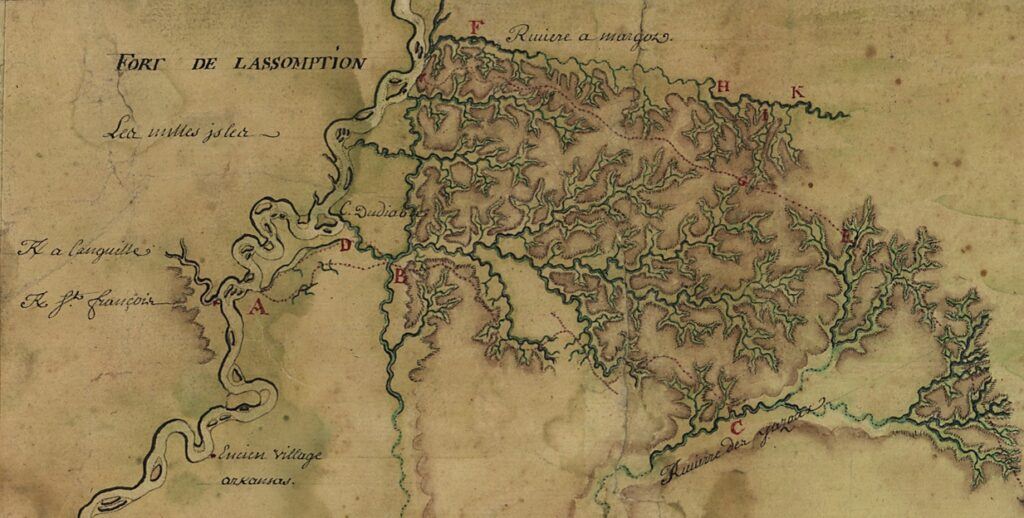
The French built Fort Assumption in 1739 on the Mississippi River near Memphis, Tennessee. Fort Assumption was named after the day it was finished, which landed on the Feast of the Assumption, August 15, 1739.
This fort was essential in protecting French settlers and troops from the Chickasaw Indians that inhabited the area. Fort Assumption had three walls protecting the fort from the Mississippi side of the fort and three walls facing the land. The French finally abandoned and destroyed the fort in 1740 after many were held hostage and released by the Chickasaw Indians.
3. Bledsoe’s Station
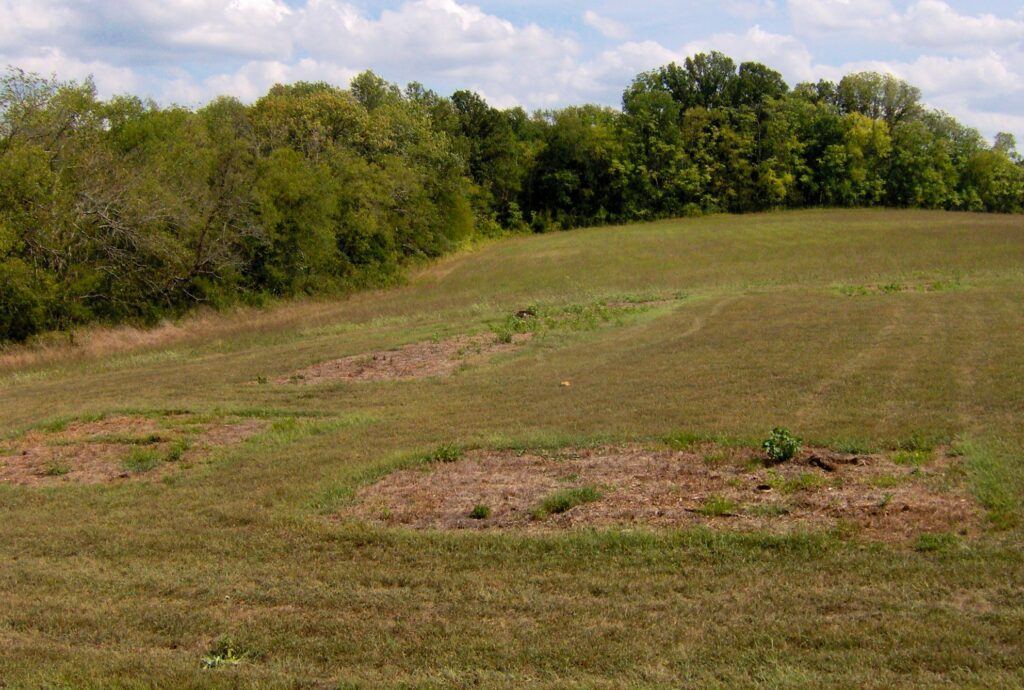
Bledsoe’s Station was built between 1781 and 1783 in the Upper Cumberland area near modern-day Castalian Springs, TN. Long Hunter, an explorer and early settler Isaac Bledsoe built the station to protect themselves and other settlers from Cherokee Indian raids during the Cherokee – American Wars.
Early settlers traveling on Avery Trace, which connected the east side of Tennessee to the state’s middle, used Fort Bledsoe as a stopping point on their journeys. Many settlers were killed in Indian attacks in this area during the late 1780s and 1790s.
After the Cherokee – American Wars ended, there was little use for the fort, which was subsequently abandoned. Bledsoe’s Station was excavated in the early 1990s. The site is part of Bledsoe’s Fort Historical Park.
4. Fort Blount
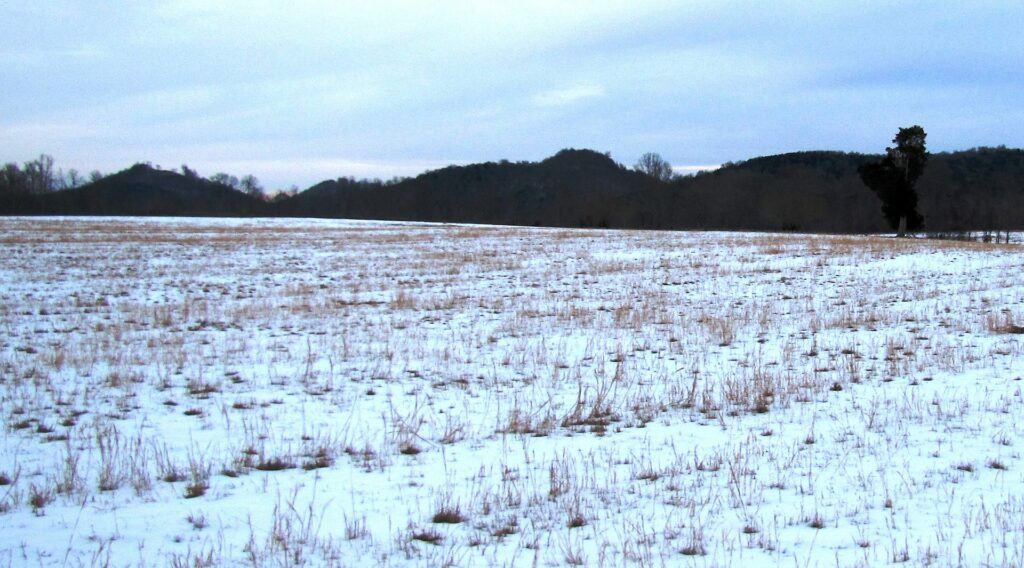
Fort Blount was built in 1794, where Avery Trace crossed the Cumberland River in Jackson County, Tn. This was an important stopping and resupply point for those traveling from Knoxville to Nashville, Tennessee, in the 1790s. Fort Blount was named after the Southwest Territory Governor Blount.
It was garrisoned by militia and later by the U.S. Army until it was abandoned in 1798. Some interesting history took place near Fort Blount. In 1796 a French Botanist named Andre’ Michaux discovered the rare American Yellowwood tree in the forests near the fort.
Future King of France Louis-Philippe passed by the fort in 1797 and wrote in his journal that the fort was being worked on. By 1802 François André Michaux, son of Andre’ Michaux, who was traveling with Moses Fiske, noted that that point had destroyed the Fort.
In 1989 archeological excavations started on Fort Blount and finished in 1994. The Tennessee Division of Archaeology found a limestone foundation that once supported a blockhouse and evidence of two other buildings and postholes where a wall once surrounded the fort.
They also unearthed evidence of pre-historic people from the Paleo-Indian period that once lived in the area, along with thousands of artifacts and some Spanish coins.
5. Camp Boone
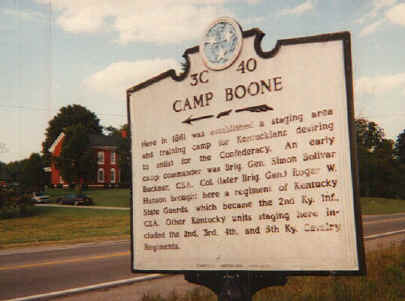
Camp Boone was a Civil War camp constructed in 1961 by three men authorized by Jefferson Davis, president of the Confederacy, to start a Kentucky Regiment. The camp was located 3.5 miles from the Kentucky-Tennessee border and was a training center for soldiers in the Confederate States of America Army of Tennessee.
This was the perfect site for the Confederates because it was close to many important cities and landmarks in Tennessee and Kentucky. All that’s left of Camp Boone is a historical marker on U.S. Highway 79 East Guthrie Road near Clarksville, Tennessee.
6. Fort Cass
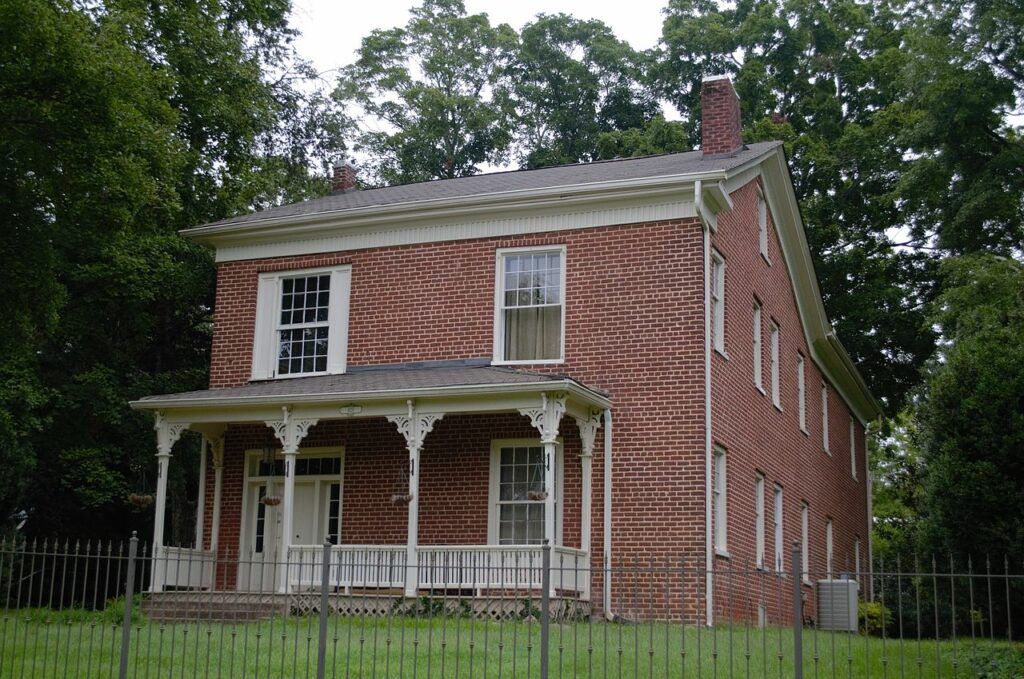
Fort Cass was built in 1834 in Bradley County, Tn, as a military installation on the Hiawassee River in Charleston, Tn. The fort’s main purpose was to headquarters the military during the Trail of Tears, where the Cherokee Indians were removed from their lands by force. The fort watched over three encampments of Cherokee Indians before they made their forced trek west to Oklahoma.
The original fort and the internment camps are no longer visible, but the historical Henegar House now sits where part of the fort once was.
7. Fort Defiance
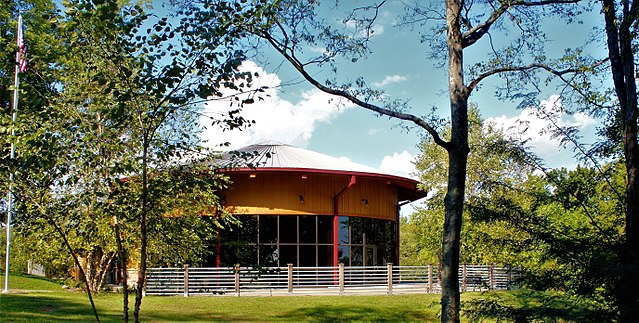
The Confederates originally built Fort Defiance during the Civil War in 1861. It was built along the Cumberland river near Clarksville, TN. The Confederates didn’t hold the fort for long. Union troops came upon the fort on February 19, 1862, and noticed a white flag hanging on the fort wall, which was abandoned. Needless to say, Union troops quickly took over the fort for themselves.
The small garrison of Union troops, the 71st Ohio Volunteers led by Colonel Rodney Mason, added to the fort so they could control the waterways on the Hopkinsville, Kentucky Pike. Then on August 18, 1862, Confederate troops recaptured Fort Defiance and the town of Clarksville.
On September 7, 1862, Union troops recaptured the fort and town where they held it until the end of the Civil War. Fort Defiance was later renamed Fort Bruce after Colonel Bruce, who was in command at the fort.
Fort Defiance has since been reconstructed, and a $2 Million museum has been added that you can visit. More information about visiting Fort Defiance Civil War park and center can be found here.
8. Fort Donelson

Fort Donelson was a stronghold held at different times by Confederate and Union forces during the Civil War. The Confederates originally built the fort in the summer of 1861 along the Cumberland River and named it after General Daniel S. Donelson of the Rebel Army.
The control of the Cumberland river was important because it led to the middle of Tennessee, and if they could control the river, they could control most of Tennessee.
Fort Donelson fell to Union forces at the Battle of Fort Donelson led by General Ulysses S. Grant on February 16, 1862, and the fort stayed in Union hands until the end of the Civil War.
In 1928 Fort Donelson National Military Park was established, and on October 15, 1966, the fort was added to the National Register of Historic Places. On August 16, 1985, Fort Donelson was re-established as a National Battlefield. Learn more about visiting Fort Donelson here.
9. Fort Henry
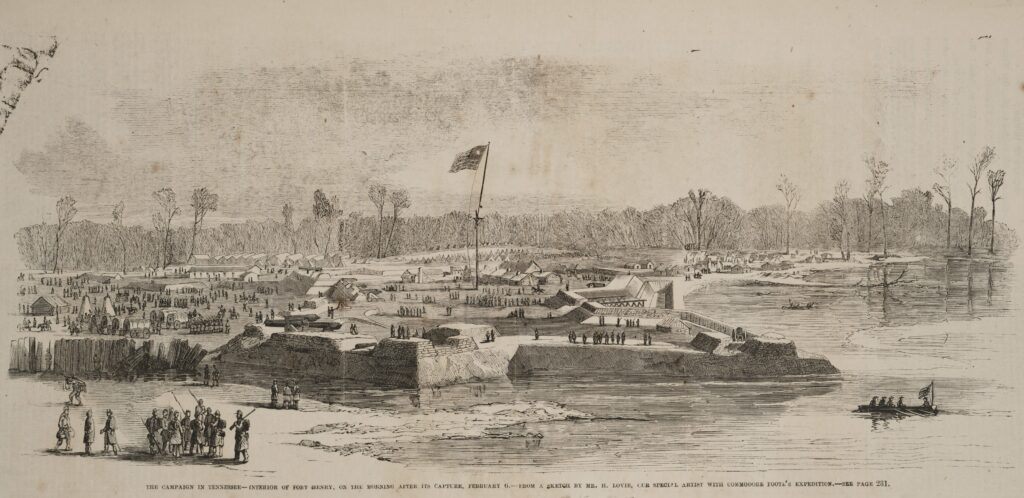
Fort Henry was named for Tennesse Senator Gustavus Adolphus Henry Sr. Construction on Fort Henry started in June 1861 on the east side of the Cumberland River. This spot was chosen so that one garrison could travel between Fort Henry and Fort Donelson on the west side of the river in case they needed to defend both positions.
On February 6, 1862, the Battle of Fort Henry commenced, and the Fort fell to Union troops on February 12, 1862. Unfortunately, the fort is now underwater because, in 1930, a dam was constructed in the Tennessee River creating Kentucky Lake.
Related: 10 Historic Forts in Texas
10. Fort Negley

Fort Negley was a Union-built fort during the Civil War. This fort was built to defend Nashville, which Union forces captured in February 1862. The fort was built on St. Cloud Hill, south of Nashville.
Fort Negley was named after Union General James S. Negley and comprised 62,500 feet of stone and 18,000 cubic feet of earth for $130,000. Fort Negley was the largest inland fort built during the Civil War.
Fort Negley never saw any significant battles and was ruined after the Civil War. Fort Negley Visitors Center and Park now sit where part of the fort once stood. More information on visiting Fort Negley can be found here.
11. Fort Pillow

Fort Pillow was located on the Mississippi River, where the Chickasaw Bluffs overlooked the river. Fort Pillow was built by the Confederate army in 1861 and was named after General Gideon Johnson Pillow. The fort was an important stronghold that controlled traffic on the Mississippi River.
In 1862 the Union army captured Fort Pillow and held it for most of the Civil War until April of 1864 when the Confederates recaptured Fort Pillow during the Battle of Fort Pillow. This was a bloody battle where 229 Black Union soldiers were either killed in battle or executed by the hands of the Confederate Army.
Fort Pillow was placed on the National Register of Historic Places in 1973 and added as a National Historic Landmark in 1974. Today you can visit the Fort Pillow Museum in the Fort Pillow State Historical Park, which has 1,642 acres. Go here for more information.
12. Fort Prudhomme
Fort Prudhomme was the first fort built by the French in Tennessee. Built in 1682 on one of the Chickasaw Bluffs that overlooked the Mississippi River, it was short-lived.
It was only built to house Cavelier Sieur de La Salle’s French canoe expedition while they searched for a member who got lost while hunting in the area.
The exact location of Fort Prudhomme is unknown, but some speculate that it was where Fort Pillow was later constructed.
13. Fort Randolph
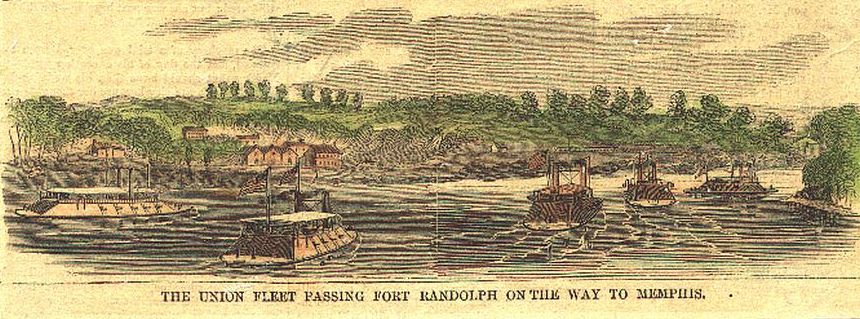
Fort Randolph was built in 1861 by the Confederates. It was in a perfect place on the second Chickasaw Bluffs 100 feet above the Mississippi River. Confederate troops could see up and down the river for 6 miles at this elevation. Fort Randolph was abandoned in 1862, and later that year, Union forces led by General William T. Sherman burned down the nearby town of Randolph. The fort no longer exists.
14. Fort Sanders
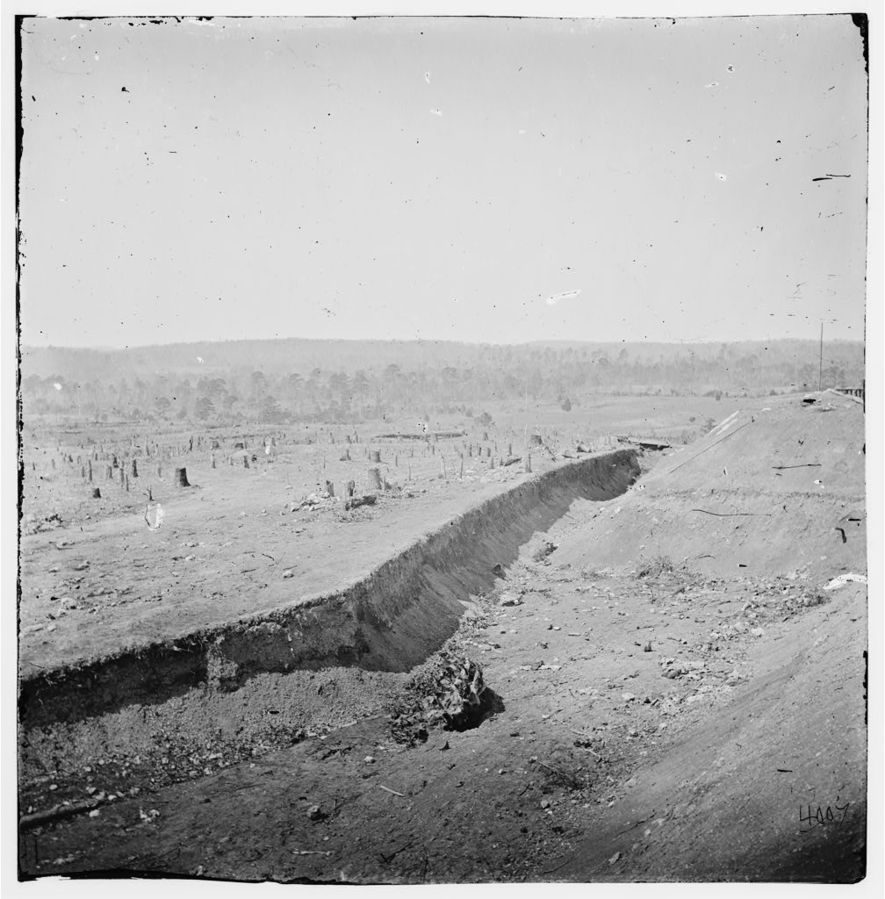
Fort Sanders was a Union-held fort built in November 1863 after Union Troops led by William T Sherman defeated the Confederates in Chattanooga. The fort was named after Union General William P. Sanders, who was killed in action on November 18, 1863.
Fort Sanders was built on the site of a fort that the Confederates were previously constructing named Fort Loudon. The Union quickly made the fort much higher. They also cut trees, sharpened the ends, and placed them outward. They cut the trees down and fastened telegraph wire from stump to stump as a trap for the Confederates when they got close to the fort.
On November 29, 1863, the Confederate Army led by General James Longstreet tried to breach Fort Sanders but was unsuccessful. This battle was later named the Battle of Fort Sanders. Fort Sanders no longer exists, but there is a historical marker placed where Fort Sanders once stood.
15. Fort Wright
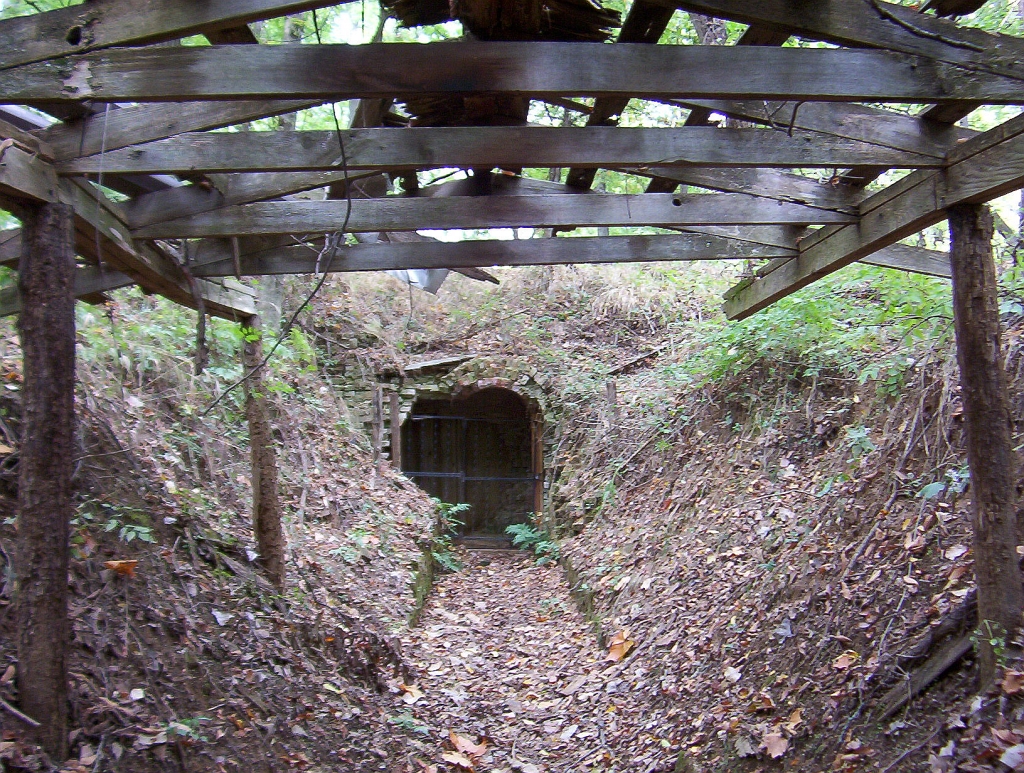
Fort Wright was built on the second Chickasaw bluff overlooking the Mississippi River in Tennessee. It was constructed in 1861 and held by the Confederate Army, which held the first military training of the Civil War there. Soldiers learned how to build forts and other skills necessary to fight in battle successfully.
Fort Wright was later abandoned by the Confederate Army in 1862 but was used intermittently during the Civil War by various other Rebel factions. All that remains of Fort Wright today is a powder magazine.
16. Fort Nashborough
Fort Nashborough was built early in 1779 and was a stockade used to protect early settlers from Indian raids. The fort was located in the Cumberland River Valley in an area known as French Lick. The fort housed about 20 log cabins on 2 acres of land. Two men known as the founders of Tennessee, James Robertson and John Donelson, are said to have established Fort Nashborough.
In 1794 the fort was abandoned, and the City of Nashville grew around the site. A replica of Fort Nashborough was constructed in the 1930s but was torn down in 2015. Fort Nashborough Historic Center can be visited in Nashville, Tennessee.
17. White’s Fort
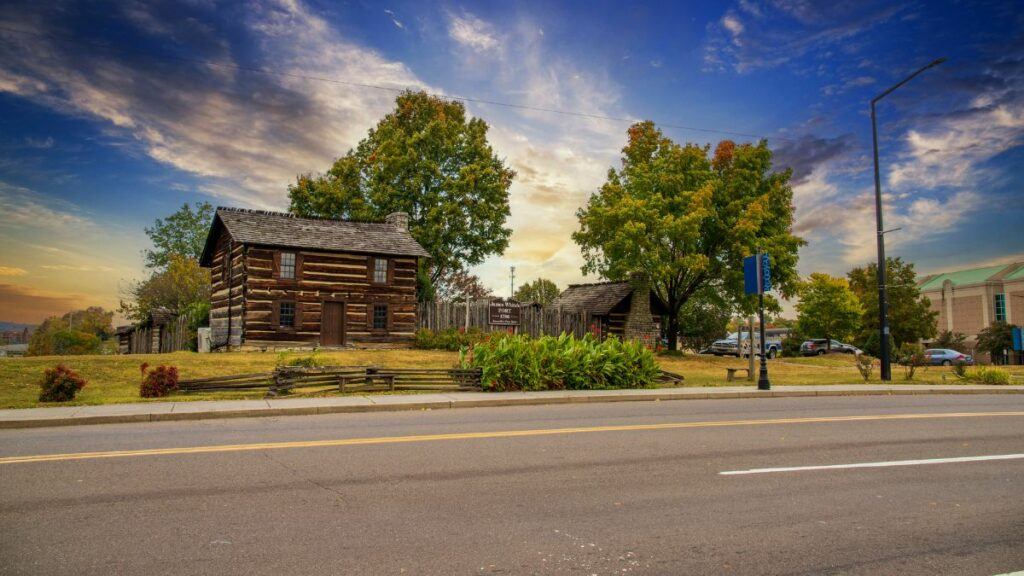
James White’s Fort was built from a single log cabin that James White had constructed in 1786. James White was a former Officer during the Revolutionary War. Once White built his cabin, other log cabins were built in the area, becoming White’s Fort. The Southwest Territories Capital was moved to White’s Fort in 1791. Knoxville later grew around Whites Fort.
Some original timbers still exist and were reconstructed in 1968 into a fort on a bluff close to where it originally existed. For more information on visiting the James White Fort go here.
18. Fort Southwest Point
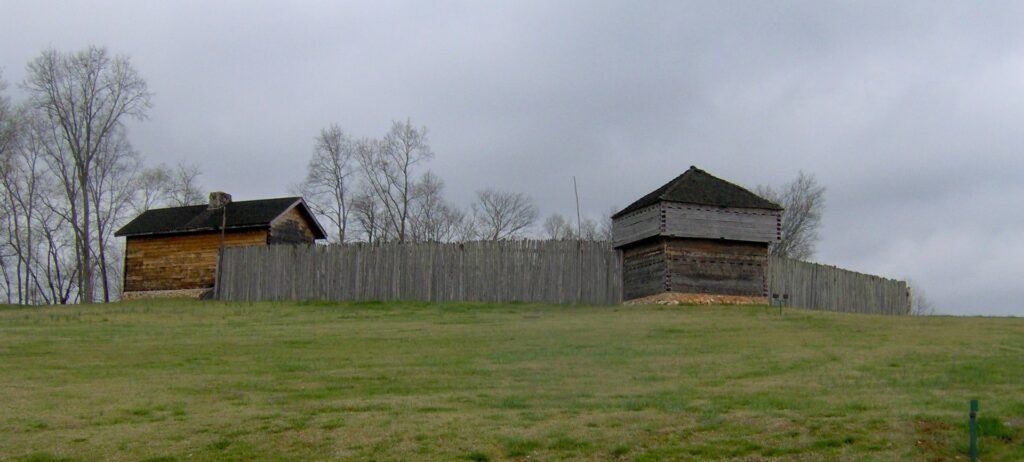
Fort Southwest Point was garrisoned and built by Federal troops led by Captain Richard Sparks and Captain John Wade in July 1797. It remained in use until 1811. The fort served a few purposes. It was a stopover for early settlers traveling between Knoxville and Nashville, Tennessee on the Avery Trace. It was also a meeting spot between the Cherokee Indians and the United States government.
The fort was originally named Fort Butler after Lieutenant-Colonel Thomas Butler but was later renamed Southwest Point. The original records of the fort were destroyed in a fire, but in the 1970s and 1980s, archeological studies and excavations took place on the site by the University of Tennessee.
They determined that 15 structures were built at the fort along with the dimensions and possibly what they were used for. They also determined that the fort was about 1.2 acres and that a palisade ditch was dug there. They also found evidence of prehistoric use, such as potsherds, an infant burial, a storage pit, and a hearth.
The fort was reconstructed and is now part of Southwest Point Park. Go here for more information on visiting Fort Southwest Point and the park there.
19. Fort Watauga
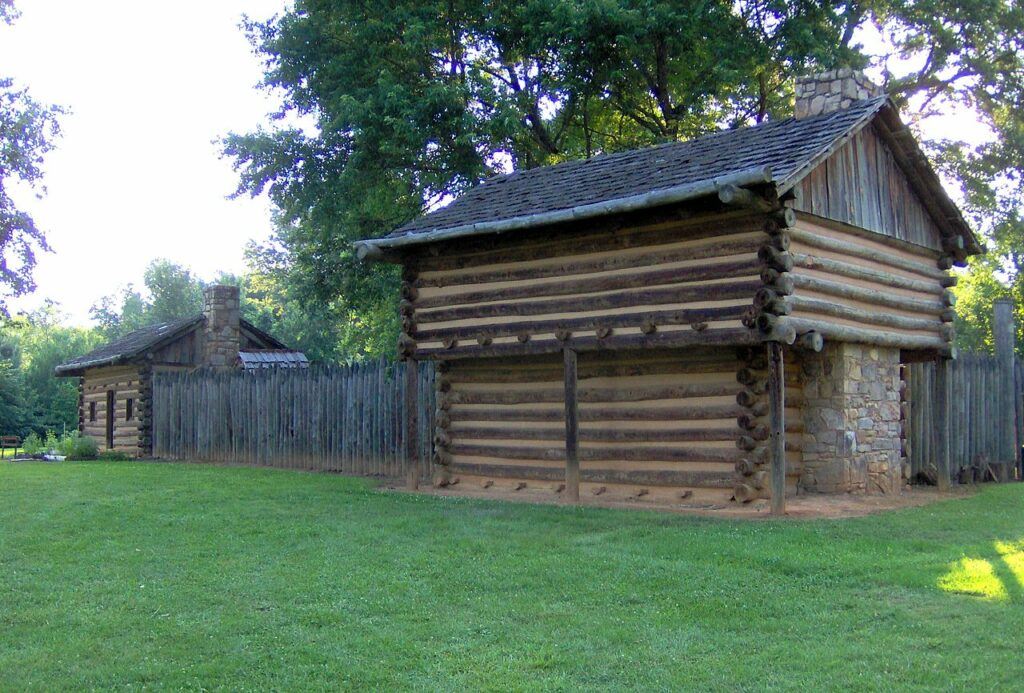
Fort Watauga was initially known as Fort Caswell after North Carolina Governor Richard Caswell. The Watauga Association built the fort between 1775 and 1776 to protect early settlers from raids by the Cherokee tribe. Fort Watauga was located in the Sycamore Shoals of the Watauga River.
The fort was excavated in the 1970s, and Tennessee allowed a reconstruction of the fort based on the information gained from the excavation and historical records of the fort. The reconstructed fort can now be visited in the Sycamore Shoals State Historic Park. Go here to find out more about visiting Fort Watauga.
20. Tellico Blockhouse
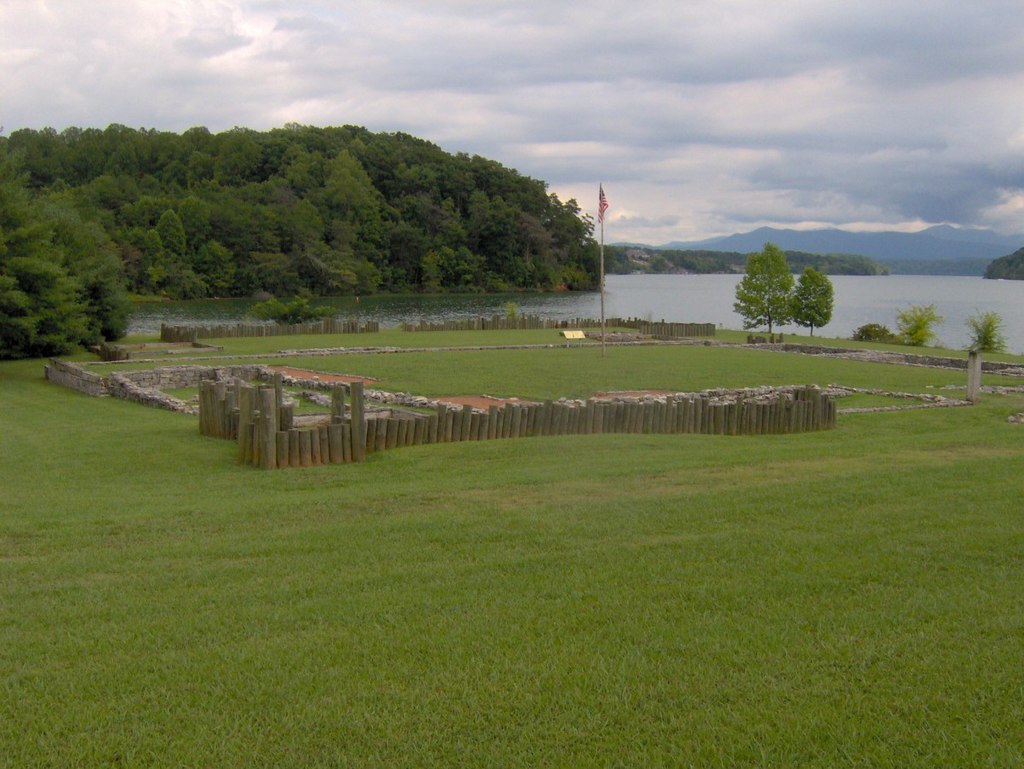
The Tellico Blockhouse was completed in 1794 and remained in commission until 1807. This military outpost was located on the Little Tennessee River near where Vonroe, Tennessee, now sits. The blockhouse was used to keep the peace between the nearby Overhill Cherokee villages and the early pioneer settlers.
Several treaties occurred at Tellico between the Cherokee nation and the United States Government. To learn more about Tellico Blockhouse, go here.
21. Fort Loudoun
Fort Loudoun was a British-built fort constructed between 1756 to 1757. The fort was located in what is now Monroe County, Tennessee. The fort aimed to bolster relations between the Cherokee Indians at the end of the French and Indian War.
In March of 1760, Cherokee Warrior raided Fort Loudoun. After the raid, the fort fell into ruins and was reconstructed in the 1930s. Fort Loudoun is now part of the Fort Loudoun State Historical Park in Vonore, Tennessee.
Explore More: Army Forts in Tennessee
Conclusion – Historic Forts of Tennessee
If you ever visit Tennessee, I encourage you to visit some of these historic forts. You will learn so much of Tennessee’s history. Many of these forts have been reconstructed and can be visited. Well, I hope you enjoyed this article, and if you have any questions or comments, please leave them below.

Cory is a website owner and content creator who enjoys fishing, history, coin collecting, and sports, among other hobbies. He is a husband and father of four.
Romans 15:4 For whatever was written in former days was written for our instruction, that through endurance and through the encouragement of the Scriptures we might have hope.

